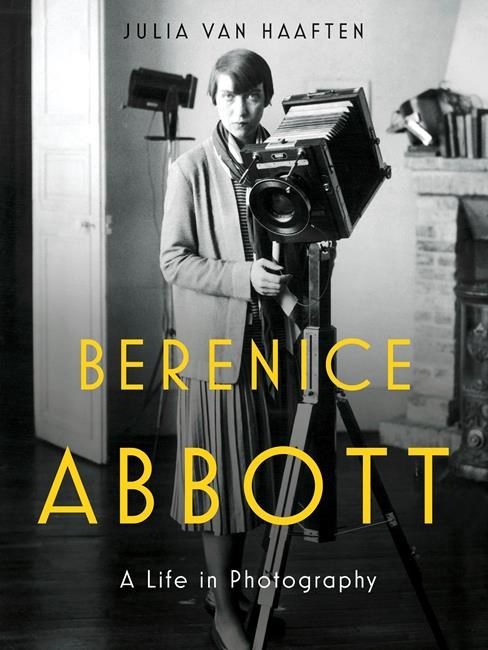
This cover image released by W. W. Norton & Company shows "Berenice Abbott" A Life in Photography, by Julia Van Haaften. (W. W. Norton & Company via AP)
April 09, 2018 - 9:48 AM
"Berenice Abbott: A Life in Photography" (W.W. Norton), by Julia Van Haaften
The word gutsy doesn't even begin to describe the great 20th-century photographer Berenice Abbott. Nor does brilliant, rebellious, prickly, cantankerous, inventive or indefatigable. Taken together, however, they convey something of the spirit of a woman born in 1898 but always ahead of her time.
She was a lesbian and feminist when homosexuality was taboo, deeply interested in science and technology when other artists didn't care, and fiercely committed to documentary realism at a time when emotion-laden pictorialism (think Stieglitz and Steichen) was all the rage in photography.
Julia Van Haaften, founding curator of the New York Public Library's photography collection and author of the Abbott volume in Aperture's Masters of Photography series, attempts to grapple with Abbott's life and legacy in a comprehensive new biography that is both absorbing and exhausting.
The introduction kicks off in late December 1932 with a thrilling description of Abbott setting up her camera on a high floor of the Empire State Building in New York City to shoot the glittering cityscape of midtown at twilight, a view immortalized in her iconic "Night View."
Then Van Haaften circles back to the beginning: the troubled childhood in Ohio. The escape to Greenwich Village, then Paris. The stint as darkroom assistant to photographer Man Ray. The early success as a portrait photographer, capturing the likes of James Joyce and Jean Cocteau. The prescient rescue of the prints and negatives of then-obscure French photographer Eugene Atget.
By 1929 Abbott was eager to return to New York where, in the midst of the Depression, she began the project for which she's best known: documenting the changing face of a city where buildings were being torn down almost faster than she could preserve them on film.
By the end of the decade she had turned her attention to scientific photography, eventually joining an MIT project to illustrate science course materials. Her constant quest for better photographic equipment and materials led to numerous inventions, including a monopod and carry-all jacket, a forerunner of the multi-pocketed safari vests that street photographers wear today.
Van Haaften marshalled a tremendous amount of research to produce this 487-page volume, and you sometimes feel she didn't want to leave a single moment of Abbott's long life — she died in 1991 — unaccounted for. Even so, Abbott's integrity and sense of honour, her restless and fearless nature, and her absolute devotion to telling the truth of her experience, come through loud and clear.
News from © The Associated Press, 2018